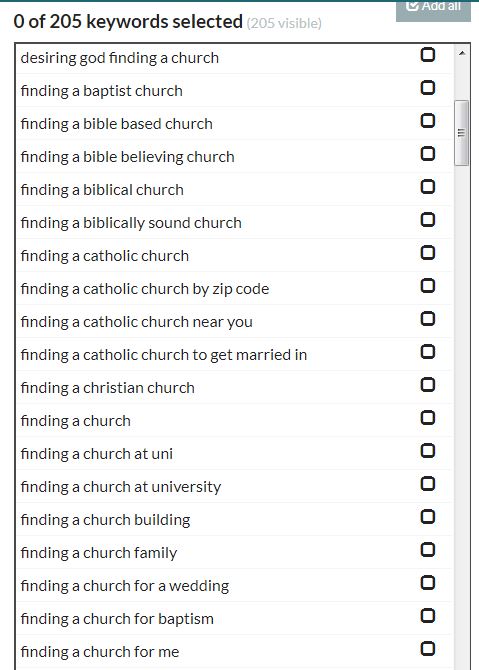
As a Christian and a digital marketer, I’ve often wondered why churches aren’t more active online.
Having a strong digital presence is crucial for churches as they need to be where their audiences (and congregation) are. After all, the average person spends well over 2 hours a day on social networks like Facebook, Instagram, YouTube and Twitter.
Doing so also helps churches to be more directly relevant to the everyday lives of the people, just like the early churches were during the time of Acts in the Bible.
Before I share some ways for churches to embrace social media marketing, let us first look at the life of our Lord Jesus Christ.
How Jesus “Goes Social”
While Jesus never published a Facebook page, recorded a YouTube video, danced to a TikTok beat, nor shared an Instagram story, He and His early disciples knew a thing or two about getting people to spread the word.
After performing miracles such as the healing of the blind and the lame, or raising of the dead, Jesus nudged those who were healed (or resurrected) to share what they’ve experienced with others around them.
A “show and tell” kind of guy, Jesus was the paragon of street evangelism and marketplace ministry. He demonstrated how the Kingdom of Heaven would look like by both His actions and words.
By working with scribes and authors, Jesus amplified His message beyond His home town. He had not one but four Gospel accounts written about His life and work. This literary tradition continued with the apostles Peter, Paul, James and John, whose letters and written works help spread the Gospel beyond the Kingdom of Judah.
Jesus was also a great social storyteller. He illustrated important spiritual principles with vivid, memorable and relevant tales such as the Story of the Good Samaritan and the Parable of the Lost Son.
He was also a great community builder and leader, focusing His limited time on Earth on training and mentoring His disciples, who in turn trained and mentored second and third tier leaders in their ministries.
Emulating His example, these “influencers” were so convicted of His message and cause that they were willing to undergo persecution and even death while spreading the Gospel.
Begin with Your Target Audiences
Like Jesus, you need to focus on who your target audiences are. Even though He intended for the Gospel message to spread to the whole world, He chose the Israelites (specifically Galileans) to begin His ministry.
On social media, it is critical for your church to paint a detailed profile of your target audiences.
Ask yourself these questions:
- What are the demographics of your target congregation? ie age group, income, housing type, language preference
- Where are your potential worshipers likely to be in terms of location?
- What are their interests, attitudes, and lifestyles likely to be (ie psychographics)?
- What challenges and needs do they have? This would determine the type of keywords and topics that they would use to search for answers online.
- Which online channels would they be active on? Facebook, Instagram, YouTube, blogs, LinkedIn or others?
Establish Your Social Media Goals

After you’ve narrowed down who you’re targeting, you need to determine what role social media marketing plays. This depends on whether you are reaching out to non-Christians, seekers, congregation members, backsliders, or active members.
Typically, there are four to five main objectives…
- Brand Awareness: Useful for new churches as well as older churches who wish to reach new audiences. This can be measured on social media through page views, impressions, visitors, reach, no of fans/followers, video views (eg 3 secs)
- Engagement/Consideration: This is where you seek to get your online community to draw closer to your church by interacting with your content. It can be measured by indicators like likes, comments, shares, clicks, longer video views (eg 30 secs), and your average engagement rate per post.
- Conversion: While your goal should be to get non-Christians to accept Jesus as their personal saviour, conversions in digital marketing parlance normally means getting an online person to opt-in for an e-newsletter, sign up for an event, download an eBook, or purchase an item. These can all be easily measured online.
- Loyalty/ Advocacy: Are active members of your congregation and your online community helping you to spread the word? Beyond sharing of photos, videos, messages, and other posts from your church’s social media accounts, your advocates could also be blogging about your sermons.
Build a Social Content Matrix
After you have determined what your social media objectives are, you should look at creating a matrix to map down what you hope to achieve for different potential members at different stages of conversion:
- Objectives: Build awareness, trigger consideration, get conversions, or build loyalty/ advocacy?
- Content Types: Develop relevant content that will draw them deeper towards a relationship with your church (and with God)
- Channels: Ensure that the right channels are used to “park” the content or deliver them. These digital channels may be social media accounts like Facebook pages, YouTube channels, or Instagram accounts.
- Key Performance Indicators (KPIs): Define the measurable indicators for each of the objectives and channels so that you can establish a base for comparison.
This can be visualised by a table which looks like this.
![]()
Craft Social Friendly Content
In developing social media friendly content for your church, it is useful to consider the three ‘S’s of digital content: Searchable, Snackable and Shareable content.

#1 Searchable Content
What answers are your potential churchgoers seeking? Which keywords and phrases would they use to find those answers?
To appeal to what your audience is searching for, it’ll be useful to understand a thing of two about writing SEO-friendly content.
Use keyword research tools like Google Trends, Ubersuggest, and SEMRush to find out which keywords related to your topic are trending, the volume of search keywords, as well as the competition for such keywords.
To arrive at more niche long-tail keywords (ie more specific questions that your target audience may be looking for), you can use a tool like keyword.io or LSIGraph.com to arrive at these keywords. Here’s an example showing a listing of possible phrases from Keyword.IO related to the keywords “finding church” in Singapore:

Once you’ve got these keywords, phrase them into questions and answers that non-Christians, seekers or even Christians may be actively searching for. This could be in the form of blog articles on your website, or Q&As answered by your senior pastor around those topics.
#2 Snackable Content
With an attention span shorter than a goldfish, online users are easily distracted by the myriad streams of content on their digital devices. To capture their attention, you need to produce bite-sized visual content that grabs their attention. This may include the following:
- Sermon Snippets: Short videos lasting 1 to 2 minutes. Make sure that they are snappily edited, and include music and animation effects if you can.
- Infographics: Where applicable, use graphics like maps, statistics, and numbers to catch people’s attention. Like the number of miracles which Jesus performed, or the ages of the longest living folks in the Bible.
- Bible Verses: Share a Bible verse each day (or week), and encourage your audience to meditate over it.
#3 Shareable Content
OK, maybe its a little challenging trying to turn water into wine and share that as a story on Instagram. However, there are other ways for you to produce shareable content.
For a start consider taking STEPPS to make your content viral. These include the following strategies:
- Social Currency: Publish remarkable facts about your church, or about the Bible, and share them with your community.
- Video Storytelling: Share stories of your clergy or congregation, and focus on making them emotionally stirring.
- Newsjacking: Offer a Christian perspective to what’s happening in the world today, preferably with your senior pastor or pastor providing valuable insights.
- Testimonials: Get your congregation to share their experience with your church, and how their lives have changed after becoming a Christian.
- Practical Tips: Offer tips, templates, and checklists that can help your members to succeed and triumph both in the present and eternal life. This can include both Christian and healthy living guidelines.
Get Your Community Involved
Lastly, but perhaps most importantly, you need to get your congregation and your wider church community involved.
As the name implies, social media marketing is a community activity. The more followers and fans you can get to like, comment and share your post (especially in the first hour), the better your result would be.
#1 Make Social Part of Service
This may be a little radical for more traditional churches. However, it makes total sense to get volunteers from your church to help share your content or to get their friends and family members to participate in online activities.
#2 Form Groups for Different Ministries
Rather than spend your Facebook time watching cat and dog videos, or indulging in the latest political gossip, you can encourage your church members to form Groups for different ministries. This can be kept open or closed, depending on your intent, and focus on discussing specific topics like Biblical lessons, Christian living, apologetics, or others.
#3 Get Congregation to Seed Conversations
Finally, see if its possible to get your church members to trigger online conversations around topics related to your beliefs. Where possible, try not to veer into contentious topics, but focus on issues where the church can provide the most good to a hurting world.
Conclusion
In the Sermon on the Mount, Jesus famously extolled all his followers to be the salt and the light of the world. Quoting from Matthew 5: 14-16:
“You are the light of the world. A town built on a hill cannot be hidden. Neither do people light a lamp and put it under a bowl. Instead they put it on its stand, and it gives light to everyone in the house. In the same way, let your light shine before others, that they may see your good deeds and glorify your Father in heaven.” – Matthew 5:14-16
To reach a world where the ‘light’ that they see comes primarily from their smart phones, churches need to adopt an effective social media strategy to reach a digital and social media savvy world.
I hope that the above tips were helpful for your church, and would be happy to read your comments on this.

Very helpful, thank you! I didn’t think about posting Searchable content and using keywords in social media.
I will have to start doing that.
Great idea on testimonials.
Also need to keep it practical.
Thanks for the insight!